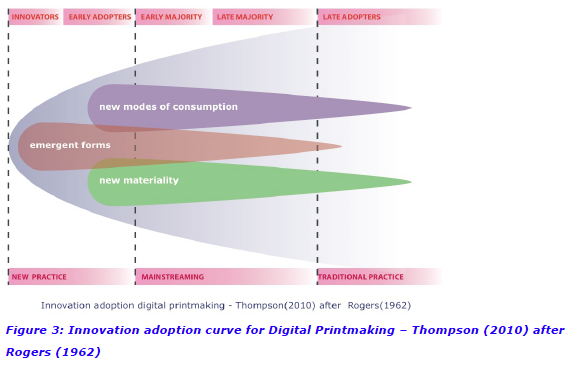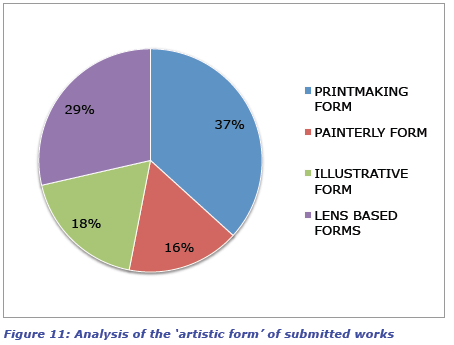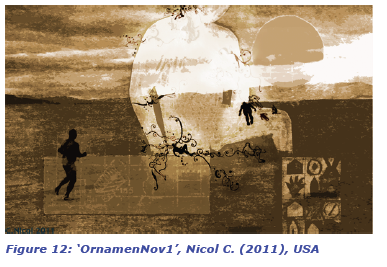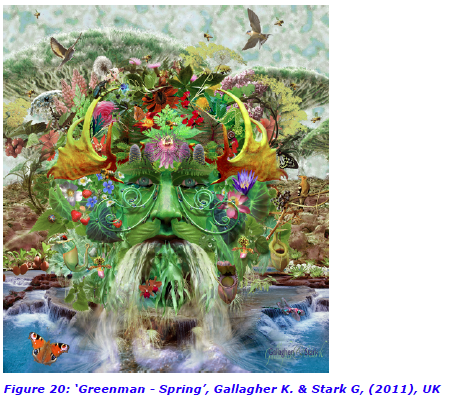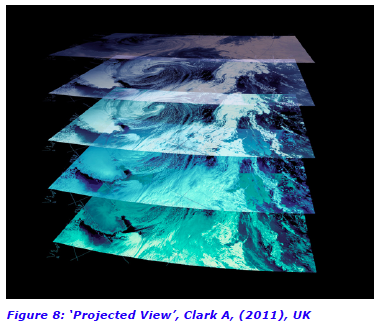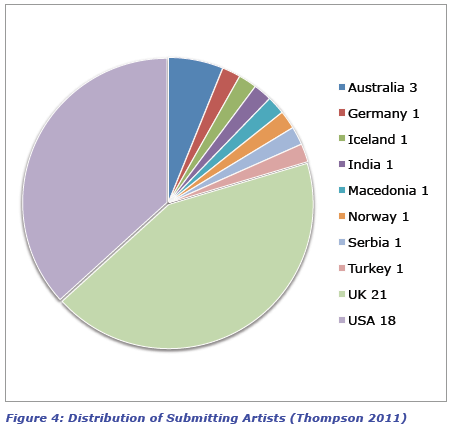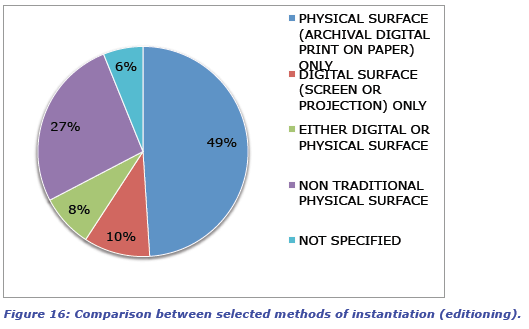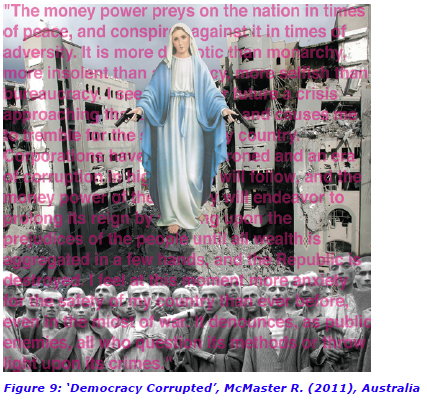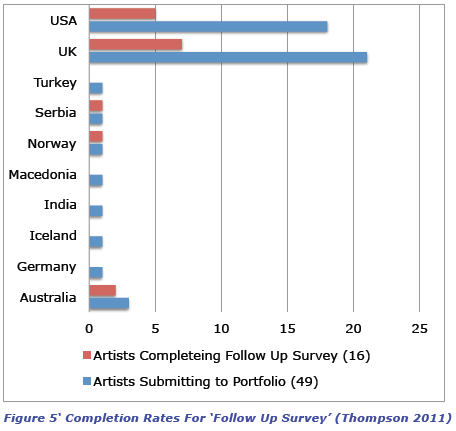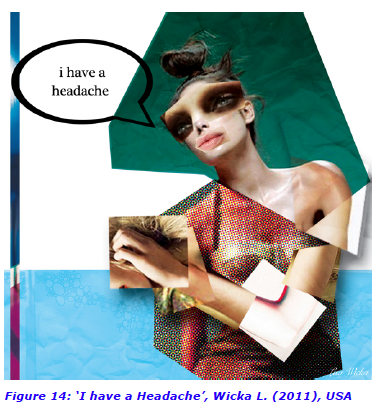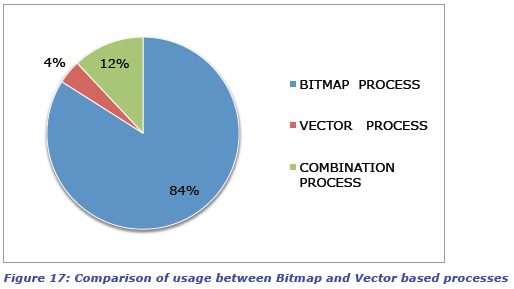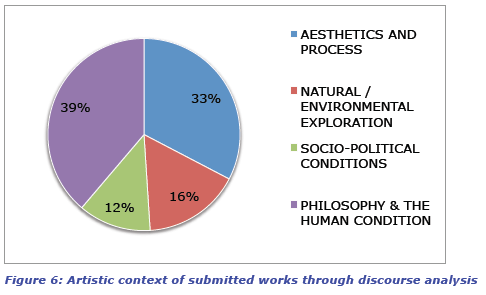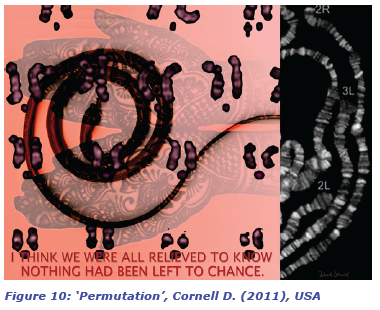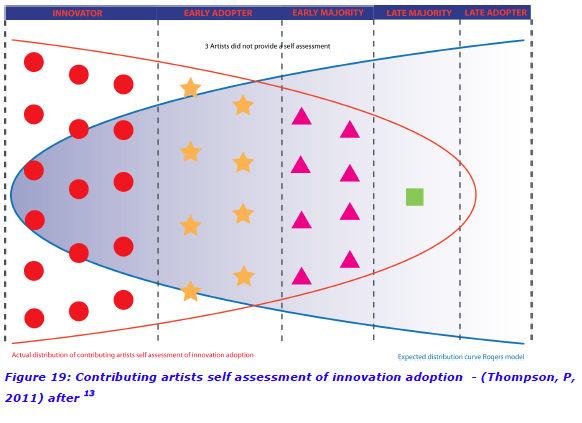Results / findings
The ‘live’ element of the research was undertaken in two phases; Phase one was undertaken during the period January to April 2011, during which the network of contributing artists were recruited using social networking. Then wholly digital mechanisms were used to co-ordinate, track and develop meaningful links with the artists in the development, instantiation and contribution of their ‘born digital’ works. Phase two - the curation, publication and distribution of the exchange portfolio, mediated through digital distribution/consumption mechanisms (e-publication and e-surfaces); was completed during the period April – June 2011.
Overall 49 artists from 10 international locations, contributed to the exchange and inherent submission survey (see Figure 4 ).
Upon completed submission of the artist’s works and submission survey materials, participants were invited to complete the follow up survey designed further ascertain their perceptions and positions in relation to their practice. This survey attracted a 32% response rate in comparison to the initial submission survey (see Figure 5 ).
Following upon data collection; data analysis and correlation was used to establish commonality and divergence models. Which were contextualised against findings from the critical contextual review through evaluative process. As the data generated from the various elements of the research are diverse, mixed methods of data analysis were adopted.
With reference to the visual works generated by peer practitioners then a visual ethnography is resultant wherein the generated images are ‘sources of data in their own right and not simply...adjuncts to the ethnographers field notes’5. The survey data generated within the peer practice elements of the research was by nature a result of open questioning generated to elicit peer practioner’s perceptions, positions and practices surrounding the visual artworks produced by them and their digital practice. Thus the characteristics of photo elicitation are inherent within this data set.
Based upon theories of compositional interpretation (visual images) and discourse analysis (supporting materials)14 Initial analysis of the gathered data is presented here. See Figure 6: Artistic context of submitted works through discourse analysis of texts indicates predominance amongst the submitting artists towards Philosophy & The Human Condition and Aesthetics & Process.
Contextually the works submitted are as diverse as the artists themselves and through the evolutionary form of the digital print medium they make expressions relating to aesthetics and process (see Figure 7: ‘Frenzy’, Janssen T. (2011), USA), natural /environmental exploration (see Figure 8: ‘Projected View’, Clark A, (2011), UK), socio-political conditions (see Figure 9: ‘Democracy Corrupted’, McMaster R. (2011), Australia) and philosophy & the human condition (see Figure 10: ‘Permutation’, Cornell D. (2011), USA).
Figure 11: Analysis of the ‘artistic form’ of submitted works presents findings from the compositional interpretation and discourse analysis of the submitted survey materials, which accompanied each work. Through this work the researcher was able to identify four ‘forms’: Printmaking, Painterly, Illustrative and Lens Based, illustrated by the following examples from within the collection. Printmaking form Figure 12: ‘OrnamenNov1’, Nicol C. (2011), USA, painterly form Figure 13: ‘Little Lover’, Low K. (2011), UK, illustrative form Figure 14: ‘I have a Headache’, Wicka L. (2011), USA) and lens based form Figure 15: ‘Bridge of glass, sea of fire’, Bang A.E. (2011), Norway.). Comparison of the methods of instantiation (editioning) selected by respondents (see Figure 16 ) provided an interesting range of responses, 49% of respondents identifying archival digital print to paper whilst 27% indicating that their work could equally be instanced to either digital or physical surfaces, 10% identified that their work was made for digital instantiation only, 8% indicated non-standard surfaces (steel 3D objects) whilst the remainder indicated no preference.
The artist’s submission survey responses provided an indication as to the balance between Bitmap and Vector based process in the development of the works as illustrated by Figure 17: Comparison of usage between Bitmap and Vector based processes .Thus a predominance of Bitmap based process was revealed amongst these artists. Further analysis revealed that within the application of these processes the artists adopted the use proprietary software packages rather than generative or code based activity. Overall ‘Photoshop’ was revealed as the predominant package amongst the bitmap applications and illustrator amongst the Vector based see Figure 18.
The results gathered from respondents about their own adoption of technology and their self-placement upon a scale of innovation adoption derived from the ‘Innovation adoption curve for Digital Printmaking (Thompson, 2010 after Rogers, 1962) see Figure 3. Provided surprising results in which the distribution curve of innovation adoption was the reverse of the model formulated by Rogers (see Figure 19).The artists’ submissions to ‘Born Digital – New Materialities’ represent a significant snapshot of current digitally mediated print making practice. These works in this context provide artistic responses to the potential for new aesthetic pleasures and the aesthetic value that can stem from experiencing, owning and collecting original digital prints.
Thus we have a picture of a diverse range of international artists utilising both bitmap and vector based methodologies, which feature image layering, manipulation and use of flexible processes inherent within the technology. Overall one draws the sense of mixed digital approaches reflecting the diverse contexts of the individual artists with each striving to evolve their own visual language (see Figure 20: ‘Greenman - Spring’, Gallagher K. & Stark G, (2011), UK).
